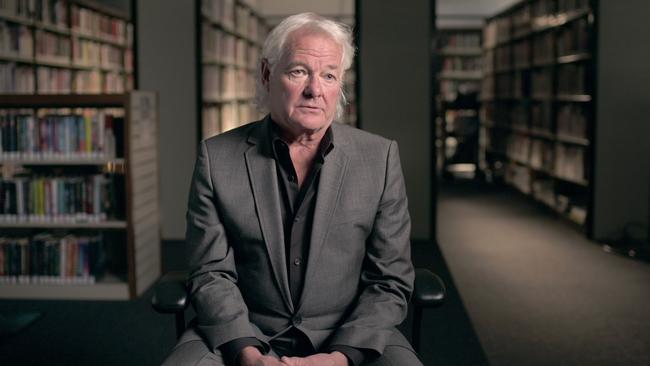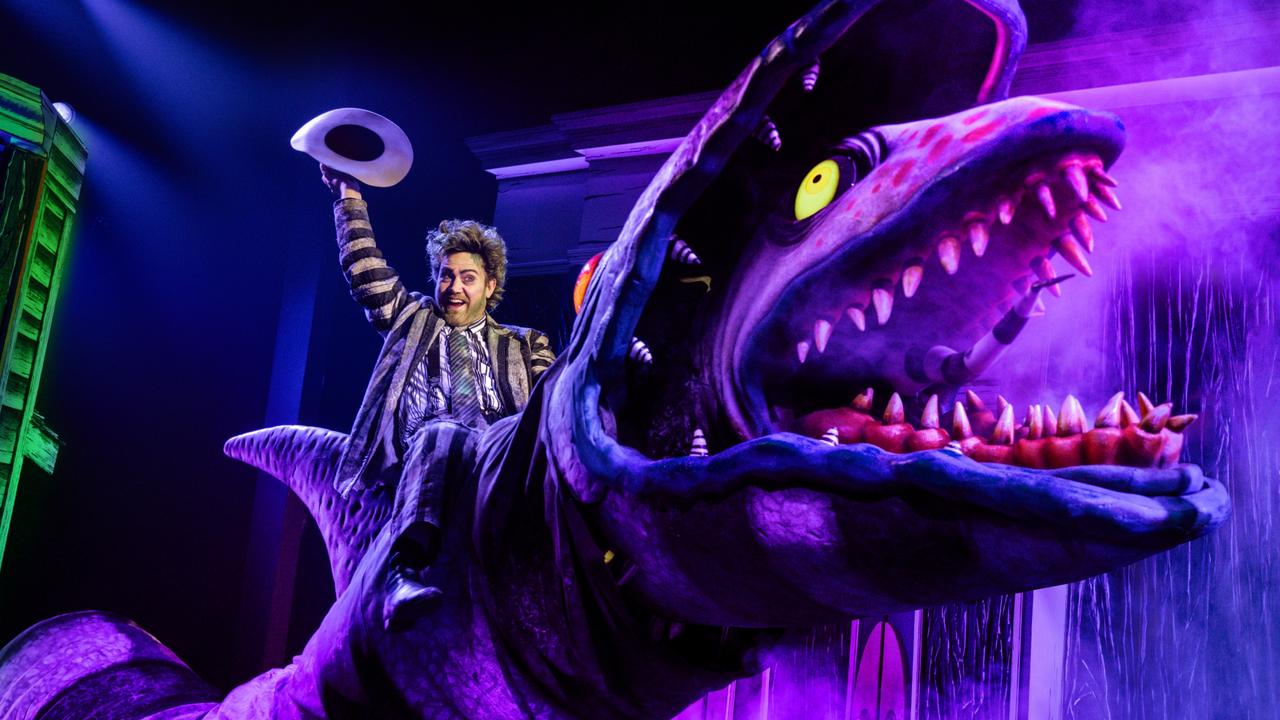The man who vanished into thin air
A new documentary series examines the unsolved case of DB Cooper, who 50 years ago seized a jet and escaped with the ransom money.

Documentaries once were seen as the province of earnest intellectuals making films that were utilitarian, pedagogic and impersonal – cinema’s least appreciated genre. The word itself was dreary, smacking of too much social concern and not enough entertainment.
Now, thanks to the ubiquity of the streaming platforms, the documentary is experiencing a surge of interest among broad international audiences as the demand for true-life stories continues to swell and itself has mutated into myriad forms – observational, advocatory, essayistic, justice-seeking, explorational and investigative, often freshly “ripped from the headlines”.
We devour documentaries in the way we watch fiction, the boundaries between the two constantly challenged, only wanting to be immersed in narrative.
The quirkily titled DB Cooper: Where Are You?! is one of the latest. It’s another series from Netflix, which in recent years has done so much to redefine documentary, its films and doco-series creatively blending fact, fiction and genre.
Joe Berlinger – who executive produced serial-bomber series Murder Among the Mormons and directed Crime Scene: The Vanishing at the Cecil Hotel and Conversations with a Killer: The Ted Bundy Tapes, all for Netflix – says it’s about “understanding the narrative structure of a scripted movie, but applying it to an unscripted movie”.
And DB Cooper plays like a documentary movie cut up into four chapters that are quirky, idiosyncratic and often very funny. It’s the story of the man revered in popular culture as the Robin Hood of hijackers who just over 50 years ago seized an American jet and insouciantly escaped with the ransom money without hurting anyone – the only unsolved case of air piracy in commercial aviation history. He evaded capture by jumping from a Northwest Airlines 727 Boeing with a parachute and diving into the cold and windy night somewhere between Seattle and Reno, Nevada.
The FBI officially suspended the active investigation in 2016 and all of the evidence, which includes three pieces found on the plane – a clip-on tie, a mother-of-pearl tie clip and eight cigarette butts – is open to the public, available to thousands of amateur sleuths on the internet. The story is riddled with gaps, inconsistencies and contradictions, inviting intense speculation.
The series takes us into the world of wonder and marvel, titillating our fascination with things unexplained, our obsession with stuff hidden from view. And the case of DB Cooper, and the mythology that surrounds him, shows that when something genuinely anomalous or almost impossible to explain happens, it’s followed by increasingly elaborate explanations that are really designed to resist confirmation.
The four-part documentary is the first true crime project for Fulwell73, the entrepreneurial British company that operates internationally across a range of television genres, including scripted comedy, factual entertainment, sport and music. Emmy award-winner Marina Zenovich, who recently directed HBO Max cult series The Way Down, directs with a creative team that also includes composer Blake Neely and graphic designer EJ Kang, who has worked on The Morning Show and Game of Thrones.
Zenovich is in great demand at the moment as the prestige true-crime documentary proliferates on the streaming services, its popularity expanding, crime stories seemingly irresistible to viewers. She describes herself as a “former actress, wannabe detective, would-be journalist, documentary filmmaker”. Her previous films have taken on some daunting and complex subjects, including Roman Polanski, Richard Pryor, Robin Williams and Lance Armstrong.
Cooper is certainly a complex figure about whom there are far more questions than answers, and a pop culture phenomenon. As Zenovich’s series reveals, hundreds of leads have been pursued since the hijacking, but no convincing evidence has ever surfaced regarding his true identity or whereabouts, and the bulk of the ransom money has never been recovered. He’s celebrated as a legendary thief who took on the system and got away with it, mocking the FBI in doing so, the underdog hero sticking it to the man.
There have been movies and other TV documentaries about Cooper, and he has been a storyline in shows such as Prison Break and Numb3rs. On DB Cooper Day, Ariel, Washington, the little town Cooper is thought to have landed in, hosts a festival celebrating the events surrounding the skyjacking, the investigation and the subsequent mystery. There was a rumour that Mad Men’s Don Draper would turn into Cooper at the end of the series, and David Lynch is supposed to have been inspired by the hijacker when naming Kyle MacLachlan’s Agent Dale Bartholomew Cooper for Twin Peaks.
Zenovich amusingly includes clips of some of these moments in the first episode, Take the Money and Run, including the famous scene when lawyer Saul Goodman first meets Breaking Bad’s Walter White, disguised in sunglasses: “Shall I call the FBI and tell them I found DB Cooper?” It’s obvious Zenovich had great fun working with her energetic editors Brett Jacobsen and Allan Duso, who cut and paste the researched material at a sometimes dizzying pace, the editors really the writers in this kind of doco series as the story unfolds on their screens.
The title of Zenovich’s series is based on one of the almost countless clothing lines that feature Cooper’s image, the identikit photo circulated by the FBI. “Hide and Seek Champ”, the T-shirts proclaim, as well as “In the Pursuit of Happiness” and, my favourite, “The DB Cooper School of Skydiving”.
The first episode establishes the facts and events of the hijack. How on November 24, 1971, a man who calls himself Dan Cooper, as ordinary-looking and nondescript as a suspect could be, buys a one-way plane ticket from Portland to Seattle, boards Northwest Orient Airlines Flight 305 and settles into seat 18C. He seems like a normal business passenger, ordering a bourbon and soda, but quickly reveals to a stewardess that his briefcase contains a bomb. He quietly demands $200,000 in cash and four parachutes.
The plane lands, his demands are met after the passengers are allowed off, and the plane returns to a stormy sky. Cooper asks the pilot to fly at only 200mph and as low as possible. The crew members are all in the cockpit when they feel the pressure in the cabin change. Cooper jumps after lowering the rear entrance staircase, disappearing into an area known as the Dark Divide.
Zenovich also introduces us to some of the main players in the mystery, cold case investigators determined to become more famous than Cooper by finding him – the so-called “Holy Grail” mystery becoming not so much about the hijacker but those chasing him. Her main interview subjects include Tom Colbert, author of The Last Master Outlaw (who somewhat obsessively believes evasive pilot and ex-convict Robert Rackstraw was Cooper); Geoffrey Gray, author of Skyjack: The Hunt for DB Cooper; and there’s an appearance from Jonna Mendez, former chief of disguise for the CIA (I kid you not), who comments on the political goals of the notorious hijackers who helped define the early part of the 1970s.
Gray, an experienced investigative journalist and a contributing editor of New York Magazine, is the most objective of the authors. “Psychologically, this case takes you into the dark divide,” he says. “This is a case that questions who you are and what you believe, what you want to believe and what really happened. The only person more famous in the world is the person who finds him.”
The series is fast-moving, an almost frenetic montage at times, kind of mirroring the public excitement as the events of the skyjacking were revealed by an agitated press. Zenovich intercuts archival footage of the television and newspaper coverage – at times using the Ken Burns technique of zooming and panning across still images, newspaper cuttings and photographs – as well as artfully shot interviews and amusing airline TV commercials from the period.
Each new location is given stylish aerial establishing shots from cinematographer Nick Higgins, and Zenovich’s editors make witty use of the split screen, a technique that respected titles director Saul Bass said “is terrific at expressing muchness”, saturating the doco with exciting imagery that might have missed the cut.
There are also telling re-creations of the hijack and Cooper’s escape, superbly realised in a stylised, abstract way by designer Kang. It’s all set to Neely’s brilliant soundtrack, an up-tempo jazzy arrangement of voices in the vocalese style made famous by Lambert, Hendricks and Ross and later by Manhattan Transfer, in which the voice kind of emulates an instrumental part.
It’s a ripping yarn, directed with wit and some bemusement by Zenovich. “What’s a nice way of saying ‘mindf..k’ without cussing?” she said recently. “I love that whole idea that he just looked like everyone; it just plays with your head.”
DB Cooper: Where Are You?! is streaming on Netflix.




To join the conversation, please log in. Don't have an account? Register
Join the conversation, you are commenting as Logout